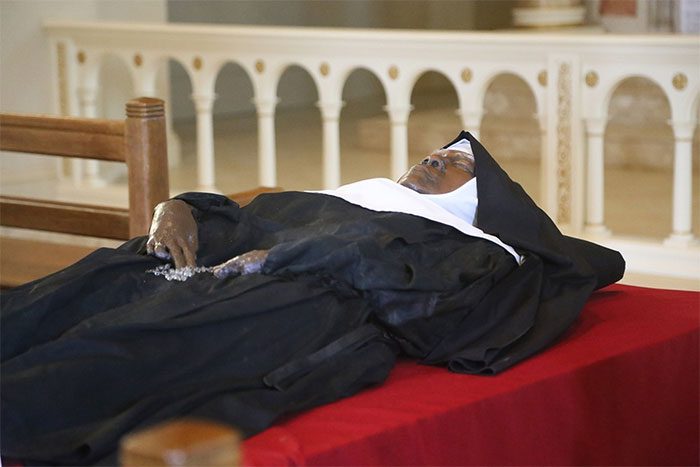Hundreds of people flocked to a convent in Missouri, USA, to view the body of Sister Wilhelmina Lancaster. Four years after her passing, the body showed no signs of decomposition.
Sister Wilhelmina Lancaster was the founder of the Benedictine Sisters of Mary at a convent in Gower, Missouri, located about an hour’s drive from Kansas City, according to a report by the Guardian on May 27.

The body of Sister Wilhelmina Lancaster exhumed after 4 years. (Photo: OSV News/Meghan Marley).
According to Catholic News, Sister Lancaster’s body was exhumed on May 18 to be transferred to its final resting place in a chapel at the convent—four years after she passed away in 2019.
However, when the coffin was opened, her body remained intact and showed almost no signs of decomposition. Sister Lancaster’s body had never been embalmed and was buried in a wooden coffin that had many cracks, creating a very humid environment inside.
“The cemetery staff indicated that under such conditions, we only hoped for skeletal remains since Sister Wilhelmina was buried in a simple wooden coffin and was not embalmed,” one unnamed sister told Newsweek.
The excavators discovered a layer of mold on Sister Lancaster’s body, likely due to condensation inside the coffin. A small portion of Sister Lancaster’s body or her garments had decomposed.
In Catholicism, bodies that do not decompose are referred to as “incorrupt” — a sign of holiness and potentially a testament to canonization. However, Bishop Johnston of the Diocese of Kansas City-St. Joseph stated that the canonization process for Sister Lancaster has not yet begun.
Catholic News reported that there are over 100 bodies considered incorrupt, and Sister Lancaster may be the first African American woman in the United States to be included in this group.
“We believe she is the first African American woman (whose body) is incorrupt,” said Sister Cecilia, the head of the convent.





















































